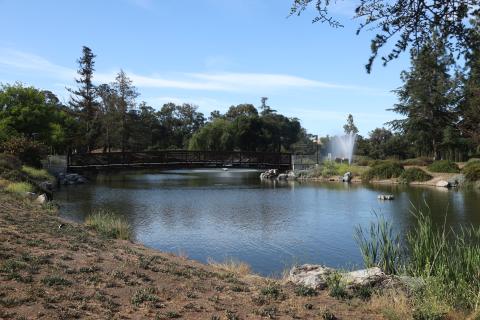Overview.
Beginning in fall 2021, Evergreen Valley College kicked off its process for developing a new Educational Master Plan (EMP) with the goal of approving and adopting in spring 2022. The College formed an Educational Master Plan Committee to steward the project with the following guiding principles:
- Center student voice as primary source of data
- Create opportunities for student, employee, and community input
- Embed opportunity, equity, and social justice as foundation for Plan development
- Make the plan actionable as a guide for the College's future direction

Five Guiding Questions
Based on the guiding principles, the EMP Steering Committee crafted the following questions to be utilized as focal points for stakeholder engagement, to organize the process and input around the student experience and student success, and to help inform student-centered EMP goals and objectives.
- Who are the students we serve now and who will our future students be?
- What are the needs of our current students and what will students' needs be in the future?
- Do our current delivery systems serve student needs? Will they serve students' future needs?
- How can we best serve the educational needs of the population in our service area?
- What resources (e.g., technology, facilities) and practices will best ensure equitable access and outcomes for our students.
Mission
Evergreen Valley College guides all students to pathways that reach their educational and career goals through equity-centered, innovative academic programs and support services. By creating a learning environment where everyone feels welcomed and supported, we are committed to a culture of inquiry, growth, and respect that creates an equitable society in which all can participate and prosper.
Vision
To be the leading college advancing opportunity, equity, and social justice through supporting students’ aspirations, education, and career attainment.
Quick Links Archive
Documents
10.21.21 Team Meeting Presentation
Communications Strategies Draft
Environmental Scan –Student Data 11.15.21
Environmental Scan - Student Data 12.13.21
2.7.22 Focus Group Initial Findings
3.10.22 Student Voices Environmental Scan Data
Environmental Scan - Student Voices March 2022
Mission, Vision, Values, and Goals – March 2022
Mission, Vision, Values Handout